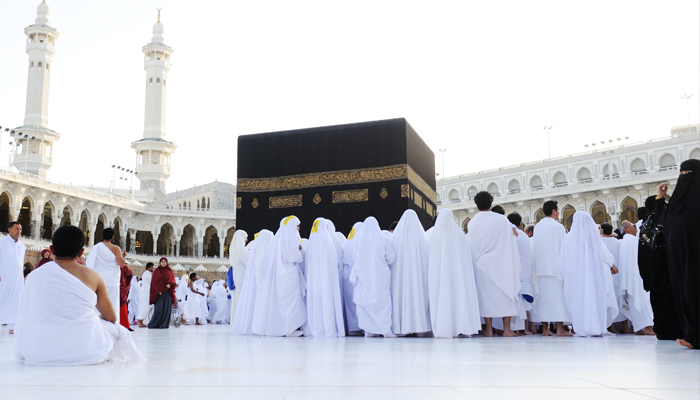
How to perform the pilgrimage of Hajj
In this section we try to give a very brief summary of all the main steps of performing the hajj. However the reader should be

Hajr-e-Aswad, also known as the Black Stone, is a sacred stone placed in the southeastern corner of the Kaaba, a cube-shaped building located in the center of the Grand Mosque in Mecca, Saudi Arabia. The Black Stone is one of the most important and revered objects in Islam, and it is believed to have been placed in the Kaaba by the Prophet Ibrahim (Abraham) and his son Ismail (Ishmael) as a sign of the covenant between Allah (God) and humanity.
The Black Stone is roughly 30 centimeters in diameter and is made of a dark, volcanic rock. It is surrounded by a silver frame and is embedded in the eastern corner of the Kaaba, about 1.5 meters above the ground. Muslims believe that the Black Stone is a blessed object, and they perform a ritual called the Tawaf, which involves circling the Kaaba seven times in a counterclockwise direction, and kissing or touching the Black Stone during each circuit if possible.
There are many stories and legends surrounding the Black Stone, and it is considered to be a symbol of the unity of the Muslim community. It is believed that the stone was once part of a single stone sent down from heaven by Allah to Adam, and that it was later broken into pieces. Some also believe that the Black Stone has the power to forgive sins and grant wishes.
Despite its importance, the Black Stone has been damaged and even stolen several times throughout history. It was most recently damaged in 2015, when a crane collapsed onto the Grand Mosque during renovations, causing part of the stone to break off. However, it was repaired and reinstalled in 2016.

In this section we try to give a very brief summary of all the main steps of performing the hajj. However the reader should be

Below are the main steps which include all the main aspects of perfuming the holy pilgrimage of Umrah. All although we have kept the basic
We offer a wide range of Ihram kits & Accessories including unscented fragrances, Bags, Prayer mats, towels, Anti-theft belts, and skincare products.

Adult Terry Ihrams - Price includes Delivery

Complete one stop shop for all your Hajj and Umrah needs from quality soft cotton Ihrams to the accessories for the holy journey Email us today for any questions
Copyright © Ihram. All rights reserved.